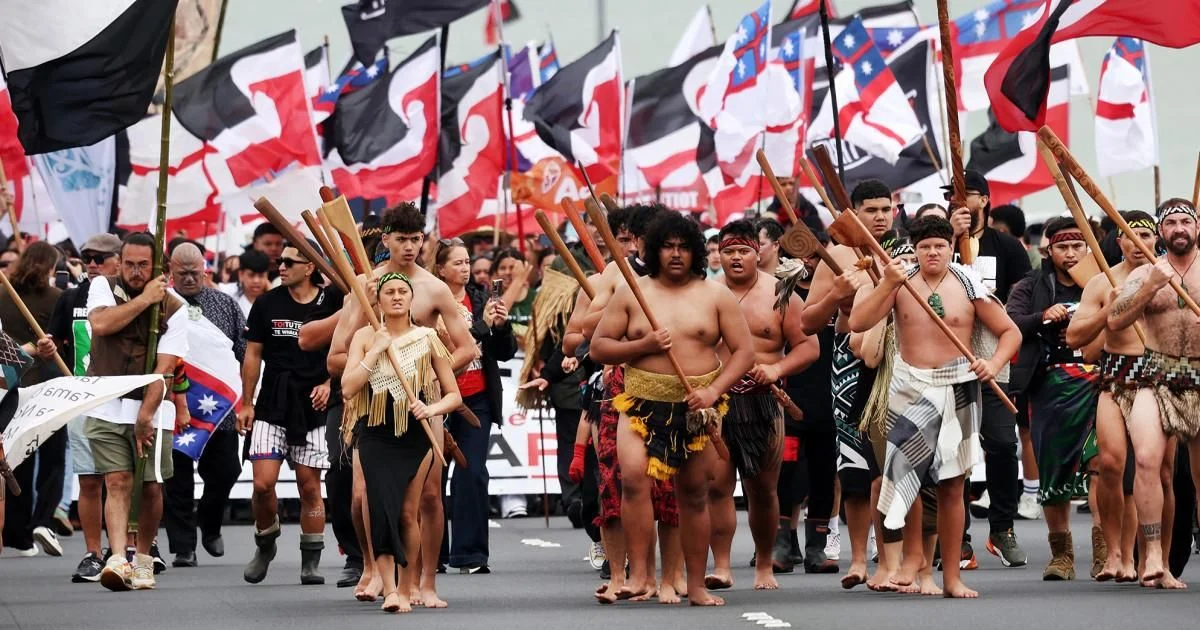Tens of thousands of protesters gathered outside New Zealand’s Parliament in Wellington, expressing opposition to a proposed bill they believe undermines the rights of the Indigenous Māori people and challenges the country’s founding principles.
The demonstration, dubbed the Hīkoi mō te Tiriti, began nine days ago in the northernmost parts of New Zealand, with marchers traveling the length of the North Island. This traditional Māori journey, or hīkoi, culminated in a massive rally in the capital on Tuesday.
The Treaty Principles Bill Sparks Outcry
The contentious Treaty Principles Bill has become a lightning rod for political debate. Critics argue it seeks to reinterpret the Treaty of Waitangi, an agreement signed in 1840 between British colonizers and Māori chiefs. The treaty is considered a cornerstone of New Zealand’s governance, embodying principles of co-governance and the protection of Māori interests.
The proposed legislation, introduced by David Seymour, leader of the right-wing ACT New Zealand Party, does not aim to alter the treaty’s original text. Instead, it seeks to define the treaty’s principles within the law, applying them to all New Zealanders rather than focusing on Māori. Supporters claim this will standardize its interpretation, while opponents fear it will dilute Māori rights and marginalize their voices.
A Historic Moment for Protesters
An estimated 42,000 people participated in the rally, a significant number for a country with a population of 5 million. Many described the march as a unifying event, emphasizing the collective strength of the Māori community and their allies. Protester Tukukino Royal called it a display of kotahitanga (unity) to uphold Māori rights.
Protesters gathered at the iconic Beehive building, where lawmakers discussed the bill. Last week, Māori MPs disrupted parliamentary proceedings by performing a haka, a traditional Māori war dance, to protest the legislation.
Understanding the Treaty of Waitangi
The Treaty of Waitangi remains one of New Zealand’s most significant historical documents. Signed by the British Crown and around 500 Māori chiefs, the treaty enshrines principles of co-governance and aims to protect Māori interests. However, differences in the Māori and English versions of the text have sparked debate over its interpretation for more than a century.
New Zealand lacks a written constitution, and the treaty’s principles have been shaped over the last 40 years through court rulings and government policies. These principles have been instrumental in addressing disparities faced by Māori and ensuring their role in decision-making processes.
Polarizing Views on the Bill
While David Seymour and his supporters advocate for legal clarity, opponents view the bill as a threat to Māori rights and identity. The legislation has faced widespread criticism from across the political spectrum and public alike.
When Seymour briefly addressed the crowds on Tuesday, protesters chanted, “Kill the bill, kill the bill.” Hīkoi leader Eru Kapa-Kingi declared, “Te Tiriti is forever,” reinforcing the treaty’s enduring significance for Māori and New Zealand as a whole.
A Turning Point in Indigenous Advocacy
Although the bill is unlikely to pass due to lack of parliamentary support, its introduction has reignited conversations about Indigenous rights in New Zealand. Under a government led by its most right-leaning coalition in years, tensions between honoring Māori heritage and pursuing political reform have come to the forefront.
This hīkoi serves as a reminder of the strength and resilience of the Māori community, uniting tens of thousands in a shared call to protect their culture, rights, and legacy.
![]()
